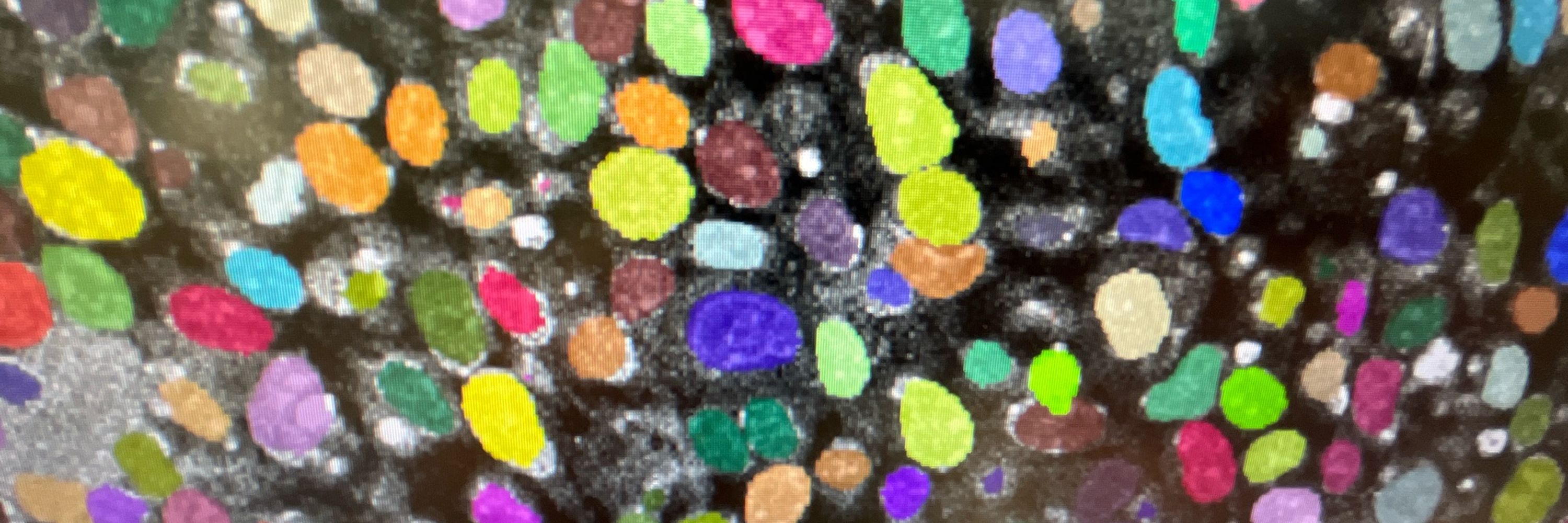
Ryan Savill
@cryaaa.bsky.social
PhD Student with the Jesse Veenvliet Group at the @mpicbg.bsky.social . Interested in all things Data and 3D bioimage analysis, organoids and development!
(9/14) With this normalized reference frame in hand we can use data with multiple developmental markers and quantify patterning maps using SLIC segmentation. Maps are a 2D representation of 3D patterning data, allowing comparison of patterning types in a unified reference frame.
September 12, 2025 at 12:44 PM
(9/14) With this normalized reference frame in hand we can use data with multiple developmental markers and quantify patterning maps using SLIC segmentation. Maps are a 2D representation of 3D patterning data, allowing comparison of patterning types in a unified reference frame.
(8/14) A core feature of SpinePy is the generation of a common reference frame, no matter the gastruloids size, shape, or orientation under the microscope. We define the AP and core-to-surface (CS) position and can use it to map the signals into a common space!
September 12, 2025 at 12:44 PM
(8/14) A core feature of SpinePy is the generation of a common reference frame, no matter the gastruloids size, shape, or orientation under the microscope. We define the AP and core-to-surface (CS) position and can use it to map the signals into a common space!
(7/14) Another neat feature is the quantification of scalar fields along the axis. We use density as an example but any signal of interest could be used to generate profiles along the AP axis. Again, the synthetic data facilitates verification of the pipeline!
September 12, 2025 at 12:44 PM
(7/14) Another neat feature is the quantification of scalar fields along the axis. We use density as an example but any signal of interest could be used to generate profiles along the AP axis. Again, the synthetic data facilitates verification of the pipeline!
(6/14) One core biological feature to quantify is gross morphology. Using optimized, non-intersecting planes, we measure radial profiles over the AP axis for fixed and live gastruloids giving insights into 3D morphodynamics. Big thanks to @mtrani.bsky.social who provided data and insight!
September 12, 2025 at 12:44 PM
(6/14) One core biological feature to quantify is gross morphology. Using optimized, non-intersecting planes, we measure radial profiles over the AP axis for fixed and live gastruloids giving insights into 3D morphodynamics. Big thanks to @mtrani.bsky.social who provided data and insight!
(5/14) This allowed me to create hundreds of gastruloids in silico, with defined spines and thickness profiles to benchmark SpinePy. We show that the spine detection performs well with low relative errors compared to the ground truth!
September 12, 2025 at 12:44 PM
(5/14) This allowed me to create hundreds of gastruloids in silico, with defined spines and thickness profiles to benchmark SpinePy. We show that the spine detection performs well with low relative errors compared to the ground truth!
(4/14) Using manual annotations to benchmark the spine is a crucial but in 3D annotation can be challenging. To have a second method of verification I generated synthetic gastruloids with some Perlin noise to generate realistic structures (like this wobbly gastruloid)
September 12, 2025 at 12:44 PM
(4/14) Using manual annotations to benchmark the spine is a crucial but in 3D annotation can be challenging. To have a second method of verification I generated synthetic gastruloids with some Perlin noise to generate realistic structures (like this wobbly gastruloid)
(1/14) I’m happy and proud to introduce: SpinePy – a framework to detect the "spine" of gastruloids and measure biological and physical signals in a local dynamic 3D coordinate system. www.biorxiv.org/content/10.1...
September 12, 2025 at 12:44 PM
(1/14) I’m happy and proud to introduce: SpinePy – a framework to detect the "spine" of gastruloids and measure biological and physical signals in a local dynamic 3D coordinate system. www.biorxiv.org/content/10.1...

